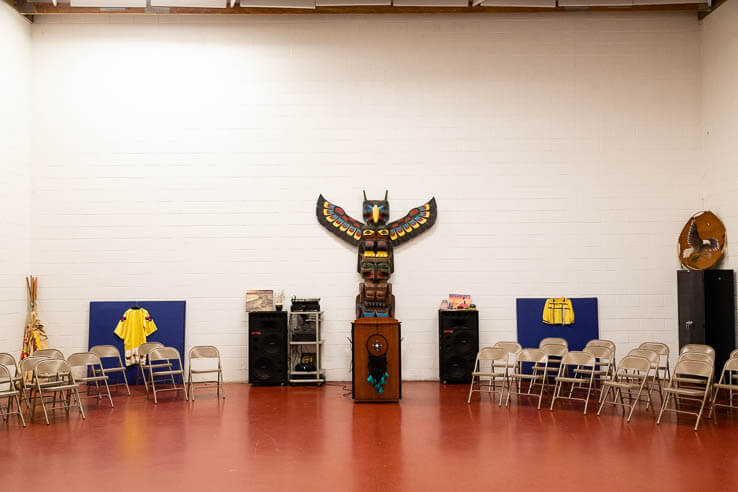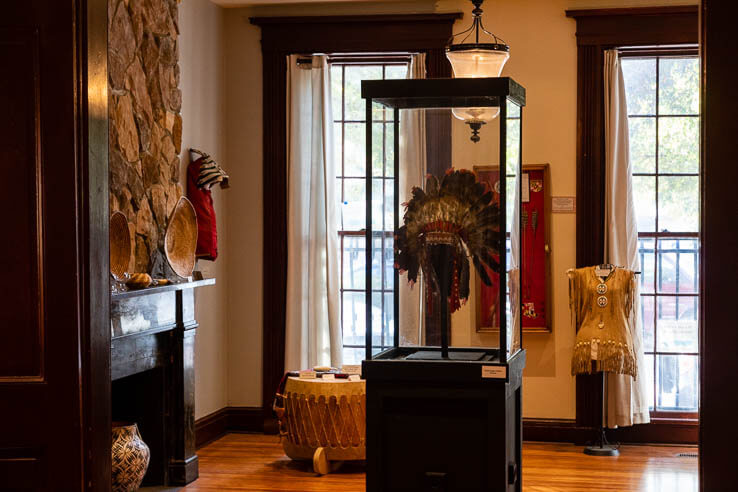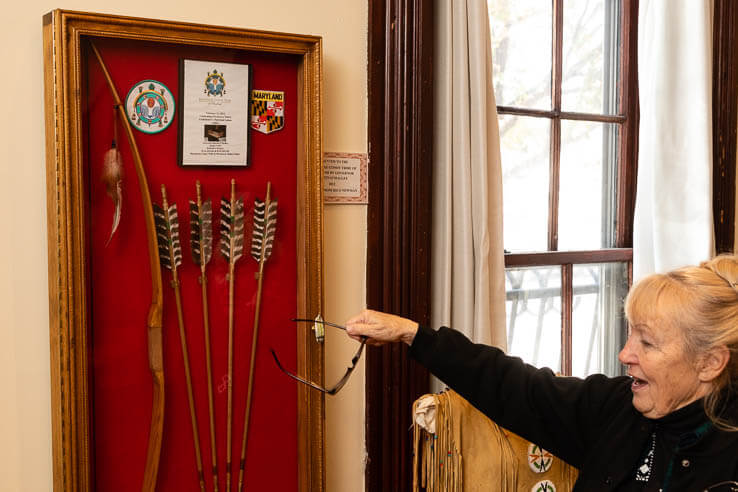Honoring native peoples through community engagement
Baltimore community center uses stories to preserve American Indian cultures

For at least 12,000 years before European settlers first arrived in the Chesapeake region, American Indians had been living here.
“In the 1600s, there were as many as 80 different tribes represented along the shores of the Chesapeake Bay,” said Dr. Dennis Seymour, chair of the Baltimore American Indian Center and a member of the Eastern Band Cherokee tribe. “Most of the tribes visited the region seasonally, coming and going throughout the year. The Bay was a great natural resource.”
But when European settlers, led by Captain John Smith, landed on the upper shores of the Chesapeake in 1608, many natives fled the region, scattering west where they dissolved into other tribes. In the 400 years since, much of the native culture and history in the region has been erased, ignored or else destroyed by years of ongoing colonization and urbanization.
However, the Baltimore American Indian Center is determined to keep the stories of the region’s American Indians alive—and to show that those stories are still unfolding around us today.

A long history of service
Founded in 1968, the Baltimore American Indian Center has been serving and celebrating Baltimore’s American Indian population for over 50 years. Its mission is to tell the stories of Maryland’s original tribes, as well as those of other tribal communities who have made Maryland their home—but its role has evolved over the years.
“When the community center was built in 1968, it was meant to be a transition center for members of the Lumbee tribe,” said Dellie James, volunteer coordinator at the community center. “It was a real cornerstone of the Lumbee community.”
The Lumbee tribe is a state-recognized American Indian tribe indigenous to North Carolina. Following World War II, an economic boom brought thousands of southerners to the north. Among the migrators were members of the Lumbee tribe, who traveled from their tribal land in North Carolina to the Baltimore area in search of work.
Over the following decades, thousands of Lumbees came to Baltimore, concentrating mostly in the six blocks around Patterson Park in East Baltimore. The neighborhood—known informally by its residents as the “the reservation”— represented the largest Lumbee community outside the tribe’s original territory in North Carolina.
The Baltimore American Indian Center was established to meet the needs of this unlikely community.
“We used to offer all kinds of classes and programs,” said James. “After-school arts programs; GED prep classes; health classes on diabetes and smoking. [The community center] was a real service to the community at the time and helped a lot of people adjust to Baltimore’s urban environment.”
The community center was also the epicenter of the community’s social life. James says that center’s early visitors still remember meeting up at the community center every weekend when they were younger, snacking on fish fries and enjoying themselves at cookouts.
In recent years, however, the local community around the center has been changing.
“In the 1980s, the jobs began moving away and a lot of [Lumbees] moved back to North Carolina,” said James. “Those who didn’t move to North Carolina moved to places like Dundalk out in Baltimore County. The community just isn’t here anymore. So, that’s the problem for us right now: how do we serve a community when the community isn’t here in the city?”

Embracing a changing role
Rather than despair the loss of its once-vibrant native community, the community center views the neighborhood’s changing demographics as an opportunity to bring its stories to a new audience. “Today, a lot of our work is about educating non-natives about native culture,” said Seymour. “We’re embracing our new role as a cultural center.”
In 2011, the community center opened the Baltimore American Indian Center Heritage Museum. The museum features collections of pictures, tools and artifacts that tell the story of American Indian heritage in the region, from native hunting practices to the Carlisle Indian Industrial School.
The museum has broadened its narrative focus from the Lumbee to include the histories and cultures of local Baltimore area tribes, including the Cherokee and the Piscataway. When sharing the cultures of these tribes, the community center looks to stories. “Native Americans told stories as a way of understanding and connecting to the world around them,” said James. “They told stories about absolutely everything.”
The community center has carried on the storytelling tradition, finding new ways to spark engagement in the community.
On Tuesday nights, the community center hosts culture classes in its multi-purpose gymnasium. The classes, which are open to the entire community, gives participants the opportunity to learn a traditional American Indian dance or even make a pair of moccasins.
For Seymour, one of the community center’s most exciting events is the annual Pow-Wow in November: a social gathering that features dancing, music, crafts and displays of American Indian jewelry and clothing. “The Pow-Wow is critical to celebrating our native identity,” said Seymour. “It lets us share the truth of how native populations have lived for the last three centuries.”
Seymour says that the Pow-Wow, which is in its 45th year, presents him with a rare opportunity to authentically connect to his heritage. “[The Pow-Wow] is a scene where us natives can learn more about our culture by actually practicing it,” said Seymour.

Looking to the future
Though Baltimore’s Lumbee tribe members have mostly left the city, Seymour believes there are plenty of reasons to be optimistic about the remaining population. “What we’re actually finding is that the broader Native American population in the area is growing.”
Indeed, census data shows that the Native American population in Maryland rose from 39,000 in 2000 to over 58,000 in 2010, a 47% increase. Seymour says that growing population might be in part attributable to a rising interest in DNA testing, which has led several people to discover their Native American ancestry. “We’re excited to see what the 2020 census tells us.”
Looking to the future, Seymour says he hopes that people notice the ways in which many American Indian customs aren’t all that different from ones practiced in the United States.
“We have traditions that, in a lot of ways, are almost cross-cultural,” said Seymour. “For example, I have a staff with feathers symbolizing each native tribe. The feathers aren’t too different from the stars on the American flag. Yes, they symbolize individuality, but they also say something about how we’re all connected.”
Plan your visit to the Baltimore American Indian Center today.

Comments
Thank you for reaching out about this. We follow the AP Style as well as federal guidance, both of which note that both the terms “American Indian” and “Native American” are appropriate to use.
On top of that, we follow guidance set in place by the National Park Service that was developed by a consultant on tribal affairs. According to that guidance, the term “Native American,” in the Chesapeake Bay region, is thought of by many as a term created by the federal government to lump all indigenous peoples together. For that reason, and because many regional tribes include the word “Indian” in their name, many prefer the term “American Indian.” For example, the cultural center mentioned in this article is officially called the Baltimore American Indian Center. Unless we know that the person we’re interviewing or the tribe they belong to prefers otherwise, we use the term “American Indian.”
I would like to state that, the people to whom you are referring are not American Indian. The correct name is Native American. American Indians are people who are of Indian decent but were born in America. Its 2019. Everyone knows about Columbus' big mistake. Please correct this going forward. Thanks
Thank you!
Your comment has been received. Before it can be published, the comment will be reviewed by our team to ensure it adheres with our rules of engagement.
Back to recent stories